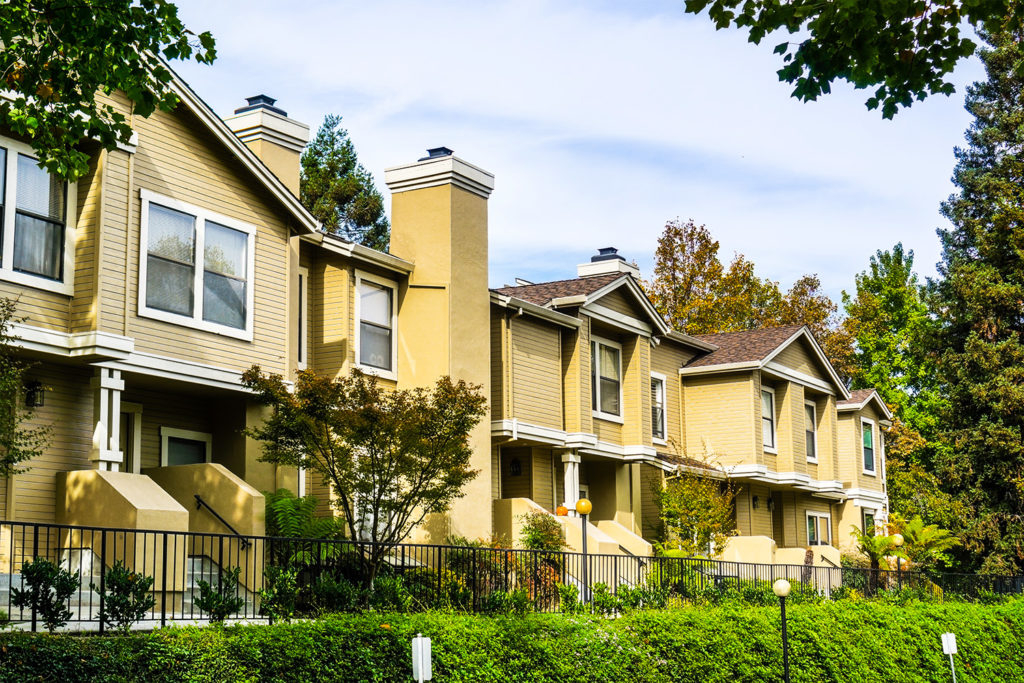The residential real estate market is booming all across the United States. Barring a few exceptions – closed markets like New York City, for example – it’s shocking to witness the forward momentum and growth amongst affordable, middle of the market and high-end real estate…
Well… almost shocking.
There are a few possible explanations for why these markets are so strong.
First off – inventories are historically low. The scarcity of available properties is leading to massive bidding wars. Extremely fierce competition for what little inventory is available is, in many cases, driving bids 10-15% over the listing prices. Whatever advantage buyers of distressed properties may have had as a result of certain aspects of the pandemic has been thwarted by the moratorium on foreclosures. There’s just no (or very little) distressed inventory available. As a result, whatever non-distressed inventory there is available is selling for top dollar.
Another component is the manufacturing delay. Essential construction materials, appliances and other critical items have been simply unavailable for the bulk of the pandemic. Most construction projects – whether they’re towards the start or near the end of the finish line – have been severely impacted. The manufacture of goods is happening, but it’s happening slowly.
Aside from new construction, existing listings are down. For one thing, people aren’t showing their homes through the pandemic. Even if one takes covid-affected 2020 out of the equation – from 2019 to 2021, listings have dropped. Sometimes it’s a simple case of supply and demand – and in this case, the demand heavily outweighs the supply. Prices continue to rise.
Getting slightly more abstract – interest rates are still very, very low. Now, if you take a look at the 10-year treasury yield, – typically the #1 indicator of mortgage rates – you’ll see that it has crept up .75% since the beginning of this year. However, rates remain well-below pre-covid levels. Keep this in mind for the time being… We will revisit.
Another big piece of the puzzle is the impact of government spending. The recently-passed, historically unprecedented $1.9 trillion stimulus package has worked miracles for economic stimulation (while creating serious inflationary pressure in the process).
On top of all of this, the pandemic has been a major win for internet-based commerce. Amazon, Netflix and other e-commerce and online delivery service companies are flourishing to the point of increasing employee wages and giving bonuses. Unlike all of their brick-and-mortar brothers and sisters, these companies are not only avoiding suffering the consequences of covid – they’re catching the upside. People are staying home, streaming shows and ordering Uber Eats instead of catching dinner and a movie. Covid has accelerated and brought even more attention to the primacy of the internet-based business.
Demand And Pricing For Commercial Real Estate Continues To Grow
Shifting into commercial real estate, the multifamily sector has been thriving in particular. Quality assets with good collections are in high demand and people are paying historically low cap-rates to obtain these assets. Despite some covid-related challenges, low-supply in the affordable housing space has allowed for the niche’s sustained good performance.

Our friends in the self-storage investment space have also been showing fairly strong reporting for Q1, a time typically marred by most people’s predisposition towards hanging on to their homes and staying put for the winter.
Quality retail is also recovering reasonably well, depending on the type of asset. From large metropolitan areas like NYC down to much smaller markets, dining capacity allowances are increasing, making way for revenue improvements and survival for many restaurants. However, in the wake of the previously mentioned dominance of e-commerce and internet-based business, poorly-positioned malls and shopping centers continue to bleed money.
Additionally, hospitality and office spaces have been very slow to recover. For the past year, companies have been leveraging Zoom and other forms of telecommunication to mitigate the negative impact the pandemic has had on business travel. The strategy has been cost-effective and convenient for many people in many ways, but hotels and brick-and-mortar workspaces have taken a major hit. These property types remain distressed and their future remains uncertain. As a result, the hotel-to-multifamily conversion strategy continues to grow at a rapid pace. Depending on the location, many see distressed extended-stay hotels and office buildings as terrific opportunities to claim social responsibility –– these spaces are primed for conversion to multifamily housing.
How Tempo Growth Fund, LLC Can Help You
Tempo Growth Fund, LLC has a substantial amount of expertise and significant investments in the Hotel-to-Multifamily space of the market. The fund was launched largely as a specialty growth fund to take advantage of these, as well as other types of “value-add” real estate strategies. The fund began to raise capital in 2020 and is planning to close by Jan 2022, investing in multiple hotel/office to multifamily conversion opportunities.
Here are a few examples of such projects:
- The Ben Lomond Suites Hotel conversion to the Bigelow Hotel and Residences, a mixed-use property in Ogden, Utah (this property went full life-cycle, selling in Feb 2021, generating Tempo Opportunity Fund LLC IRR > 73%, 2.2X multiple under 21 months)
- Two extended-stay hotels, Residence Inn, conversions to housing in Winston-Salem, NC and South Bend, IN
- Two Ramada Inn conversions in Mesa, AZ and New Braunfels, TX
- A Best Western hotel conversion in Longmont, CO
- Conversion of an office building to multifamily housing in downtown St. Louis, across from the Cardinals ballpark
In case you’re not familiar with our funds, here’s an overview:
Tempo Growth Fund LLC is a limited liability company organized in the state of Delaware. The fund’s areas of investment include Distressed Commercial Real Estate debt & Value-add investments such as storage buildings and multi-family housing.
Overview:
- Real Estate Growth fund
- Closed-ended
- Well-diversified
- Target annualized ROI = 12-18%
- Tax-efficient
- 5-7 years term
- IRA Friendly
- 8% Pref with 80/20 Class A ($1,000,000+), 70/30 Class B ($250,000 – $999,999)
Tempo Opportunity Fund LLC, TGF’s sister fund, is an income & growth fund focused on well-diversified real estate investments. The fund’s strategy is to invest with the best operators in their niche, such as self-storage, multifamily, distressed & discounted commercial debt, conversion of hotels to affordable multifamily housing, office redevelopment to multifamily, shopping plazas, and many others.
What This Means for the Rest of 2021:
Taking everything that’s been previously stated into consideration – the outlook for the rest of 2021 is strong.
A few things to consider: If the FED fails to slow down the rising rates via QE and similar programs, the rising mortgage rates could create substantially higher financing costs. Debt-to-income ratios could potentially get worse and residential real estate becomes less affordable. Putting the low real estate inventory and rising rates together, there’s potential for some negative market impact.
For investment properties – cost of capital is critical. As interest rates continue to climb, the debt-service payments will increase, reducing operating income. This can halt the value growth of properties. It’s simple math – if the rents increase, high interest payments can be sustained. However, if rent-growth falls behind cost-of-financing growth, downward pressure is created.
Having said this, both rent increases and price growth in many markets are projected to continue. The old real estate expression “location, location, location” is as true today as it ever was. The industry is totally location and submarket driven. Recovery and growth moving forward should follow very particular submarket trends. Seemingly macro-level phenomena like the increase in migration from blue to red states can be chalked up to particular submarket appeal, in that red-states tend to feature much more business-friendly submarkets than their blue counterparts. Consequently, Florida is thriving, Texas is thriving (residentially and commercially) and will continue to do so. Many markets are projected to have 6-10% growth over the course of the year, barring any more Covid-like surprises. Bearing these few speculations in mind, after a tumultuous 2020, the outlook for the rest of this year is very positive.
Want to learn more? Reach out to us at Team@TempoFunding.com for more information about investing with us. You can also schedule a time to chat with Alina, our Investor Liaison Consultant by clicking here.
Also, be sure to check out my latest podcast episodes:
- 089: Tax Deferral Methods To Grow Your Business With Brett Swarts
- 088: Real Estate Investing During The Pandemic With Kathy Fettke
- 087: Is Multifamily Property Worth Investing In?
Thanks for reading,
Mike Zlotnik CEO, TF Management Group LLC
This newsletter and its contents are not an attempt to sell securities, nor to sell anything at all, nor provide legal, nor tax accounting, nor any other advice. The presenter is a private lending and real estate fund management business, and the information represented herein are purely for educational purposes and represents the opinions of the presented. Prior to making any investment or legal decision you should seek professional opinions from a licensed attorney, and a financial advisor.
TF Management Group LLC (TFMG) is an investment fund management company that specializes in both short-term debt financing for real estate “fix and flip” projects, and long-term “value-add” equity deals.

